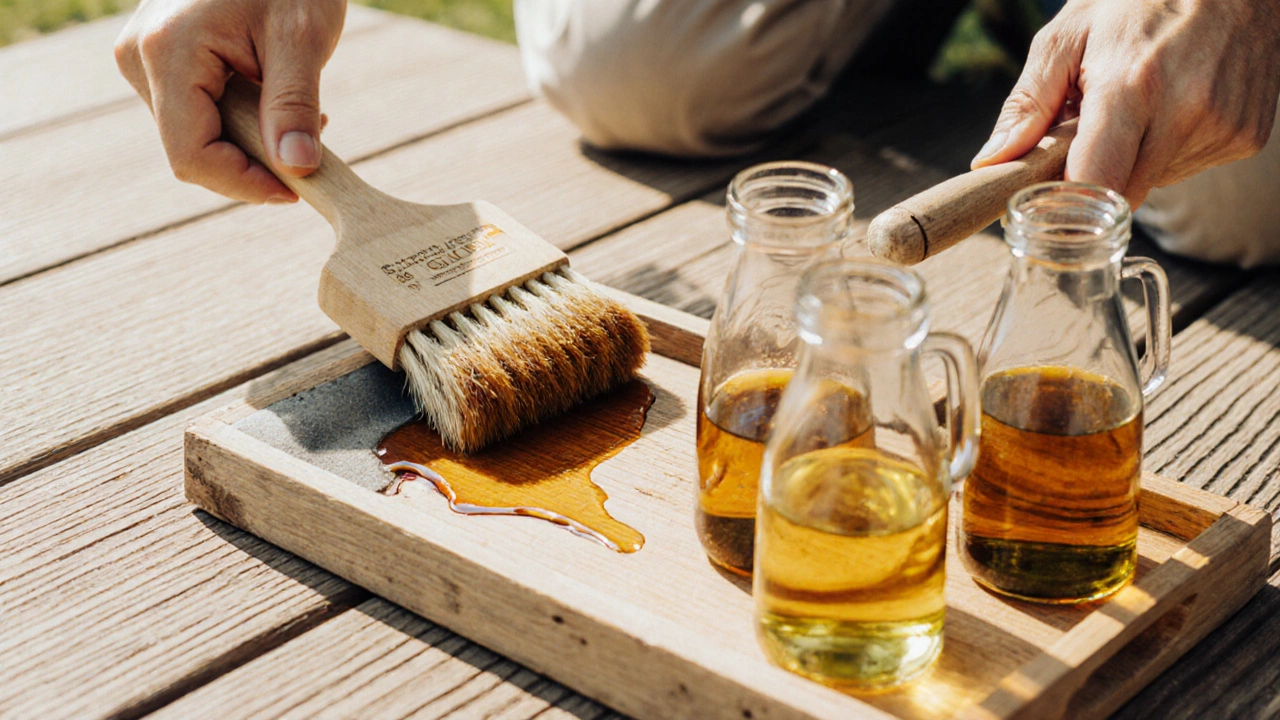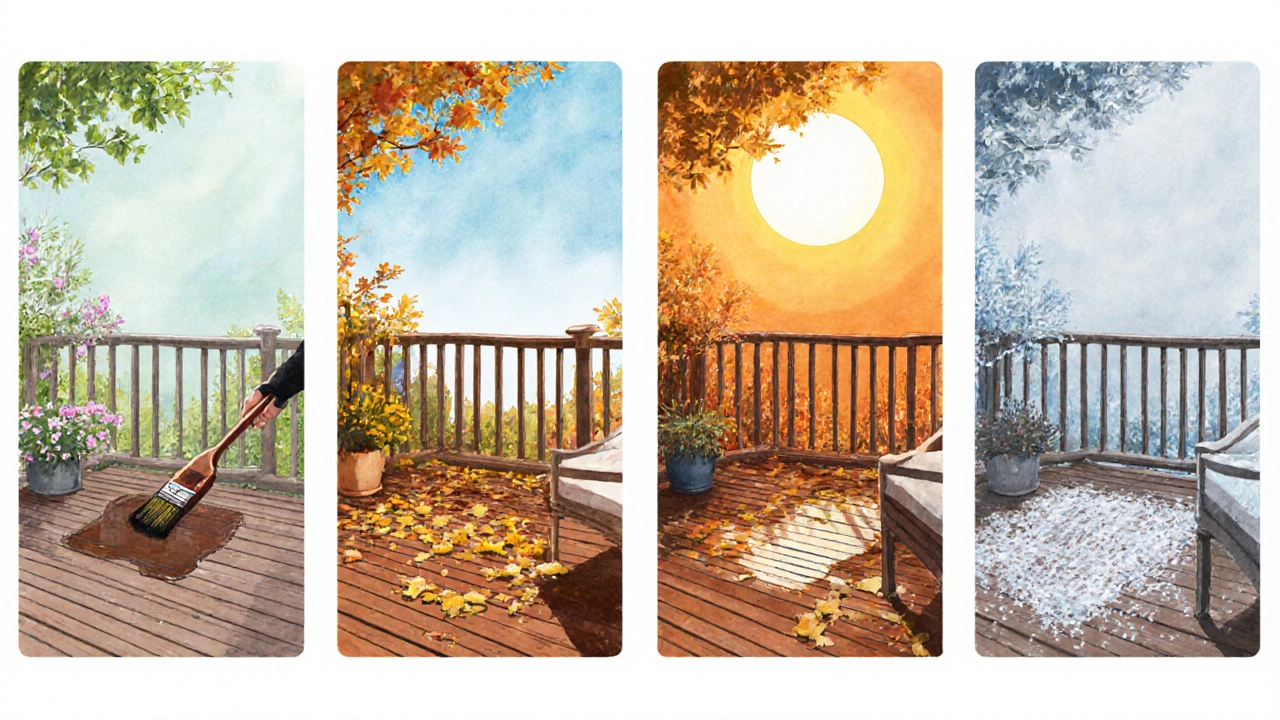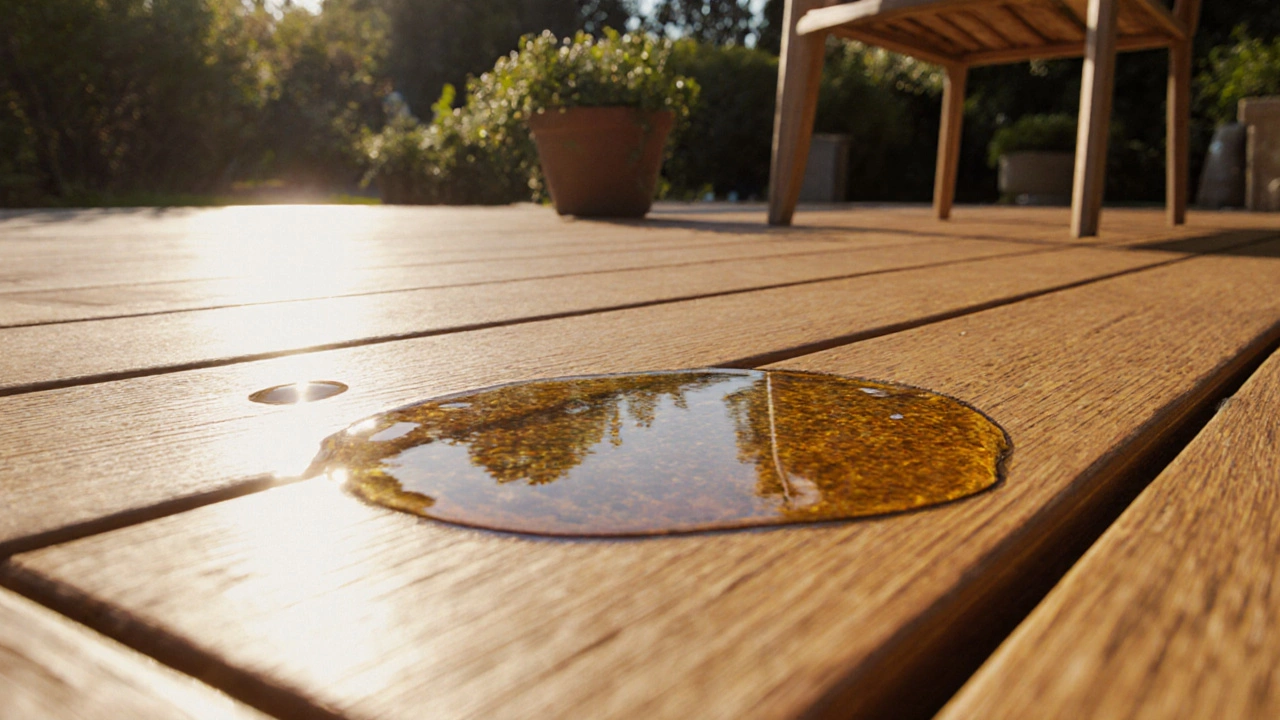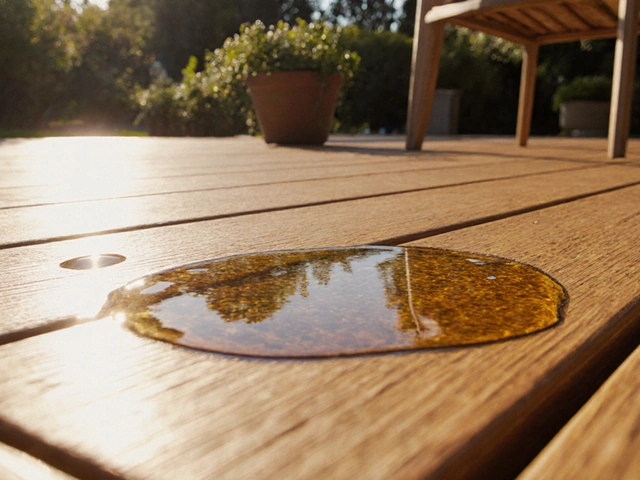Terrace Oil Frequency Calculator
Calculate Your Oil Schedule
How It Works
Based on your selected factors, we calculate the optimal oiling frequency. This tool considers material type, climate conditions, sun exposure, usage intensity, and oil type to provide a recommendation aligned with industry best practices.
Note: This is an estimate. Always check the surface condition before oiling and adjust based on actual wear and tear.
When it comes to keeping your Terrace a flat outdoor space that can host plants, furniture, or just a place to relax looking fresh, regular oiling is a game‑changer. Too little and the surface dries out, cracks, or lets water seep in; too much and you waste money or create a slippery hazard. This guide breaks down exactly how often you should oil your terrace, why the timing matters, and which oils work best for different materials.
Why Oil Your Terrace in the First Place?
Oil forms a protective skin that repels water, blocks UV rays, and locks in moisture. For wooden terraces, oil prevents rot and warping. On concrete or stone, oil‑based sealers fill micro‑pores, reducing water infiltration that can cause freeze‑thaw damage in colder climates. In short, oiling extends the life of your terrace, keeps it looking glossy, and reduces long‑term repair costs.
Choosing the Right Oil for Your Terrace
The market offers several natural and synthetic options. Below is a quick rundown of the most popular choices.
- Cedar oil derived from cedar wood, known for its pleasant scent and natural insect‑repelling properties. Ideal for wooden decks exposed to summer heat.
- Neem oil cold‑pressed from neem seeds, provides strong UV protection and a subtle, earthy aroma. Works well on both wood and porous stone.
- Linseed oil a traditional vegetable oil that hardens into a durable film. Best for historic wooden terraces where a natural finish is desired.
- Mineral oil a petroleum‑based oil that penetrates deeply and dries quickly. Good for concrete or stone surfaces that need fast turnaround.
Factors That Influence How Often You Should Oil
There isn’t a one‑size‑fits‑all answer. The right interval depends on four main factors:
- Material type - Wood absorbs oil and weathers faster than concrete.
- Climate - Hot, sunny regions dry out oils quicker; rainy zones may need more frequent resealing.
- Sun exposure - A terrace that faces south gets more UV stress than a shaded one.
- Usage intensity - Heavy foot traffic, planters, and outdoor furniture can wear away the finish faster.
Seasonal terrace oiling schedule Recommendations
Below is a practical calendar that works for most temperate climates. Adjust up or down based on the factors above.
- Spring (March‑May): Clean thoroughly, then apply a full‑coverage coat. This sets the base before the heat of summer.
- Summer (June‑August): Spot‑touch any high‑traffic zones every 4‑6 weeks. If you notice the surface looking dull, add a light top‑coat.
- Autumn (September‑November): Perform a second full coat after leaves have fallen. This protects against winter moisture.
- Winter (December‑February): In regions where temperatures stay above 0 °C, a final thin coat can prevent freeze‑thaw cracks. In colder zones, skip oiling and focus on drying the surface.

Step‑by‑Step: How to Oil Your Terrace Properly
- Clear the area: Remove furniture, pots, and debris. Sweep or use a leaf blower.
- Clean the surface: For wood, wash with a mild soap solution; for concrete, use a pressure washer. Allow 24 hours to dry.
- Prepare the oil: Stir natural oils gently; avoid shaking synthetic sealers that can create bubbles.
- Apply evenly: Use a natural‑bristle brush for wood and a roller for concrete. Work in small sections to keep a wet edge.
- Let it soak: Allow the oil to penetrate for 15‑20 minutes, then wipe off excess with a clean rag.
- Cure time: Keep the terrace covered or avoid foot traffic for 24‑48 hours, depending on the product’s instructions.
Common Pitfalls and Pro Tips
Pitfall: Applying oil on a wet surface. The oil won’t bond and will create streaks.
Pro tip: Test a small hidden spot first; if the oil beads, wait for the surface to dry completely.
Pitfall: Using a high‑gloss oil on wood that expands in humidity.
Pro tip: Choose a matte or satin finish for outdoor wood to allow slight breathing.
Pitfall: Skipping the strip‑and‑re‑oil cycle after several years.
Pro tip: Every 3‑5 years, strip old oil with a citrus‑based remover and start fresh. This restores the wood’s natural grain.
Quick Maintenance Checklist
- Inspect for water stains or mold every month.
- Wipe spills immediately; chemicals can degrade oil.
- Re‑apply a light coat after severe storms.
- Store oil in a cool, dark place to prevent oxidation.

Terrace Oil Types Comparison
| Oil | Source | Drying Time | Water Resistance | Best For | Approx. Cost (per litre) |
|---|---|---|---|---|---|
| Cedar oil | Tree resin | 6‑8 hrs | Medium | Exterior wood decks | $12‑15 |
| Neem oil | Seed press | 4‑6 hrs | High | Wood & porous stone | $14‑18 |
| Linseed oil | Flax seeds | 12‑24 hrs | Medium‑high | Historic wood, eco‑friendly projects | $10‑13 |
| Mineral oil | Petroleum | 2‑4 hrs | Very high | Concrete, stone, quick‑turnover jobs | $9‑12 |
When to Skip Oiling
If your terrace is made of metal, plastic, or already has a factory‑applied polymer coating, adding oil can cause slippage or degrade the original finish. In such cases, focus on cleaning and using a dedicated non‑oil sealant instead.
Frequently Asked Questions
Frequently Asked Questions
How can I tell if my terrace needs oiling?
Look for a dull, chalky surface, water beading instead of beading, or small cracks in wood. If a drop of water spreads quickly rather than forming a bead, the protective layer has worn off.
Can I use outdoor furniture polish instead of oil?
Polish provides a temporary shine but doesn’t penetrate or protect against moisture like true oils do. For long‑term protection, stick with a dedicated terrace oil or sealer.
Is it safe to oil a terrace that has vegetable gardens?
Choose food‑grade oils such as cold‑pressed neem or linseed, and avoid spraying directly onto soil. Apply oil only on the walking surface, not on planting beds.
How long does a single oil coat last?
On wood, a good coat lasts about 6‑12 months in sunny climates. Concrete or stone can hold up 12‑18 months with mineral oil. Weather extremes shorten these periods.
Do I need to sand wood before each oiling?
A light sand between coats (120‑grit) helps the new oil adhere better, especially after the first year of use. Skip sanding if the surface is already smooth and clean.
By following the right terrace oiling schedule and choosing the proper oil for your material, you’ll keep your outdoor space looking vibrant and resilient for years to come.



